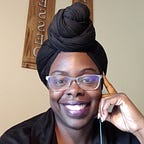This is what I think about…the spectrum of White allyship
Membership has its privileges. Yet allyship does not allow you to carry a membership card so you really don’t know who is an ally at work, in the community or church unless you have seen something done or something said in front of you. Allyship can be such a powerful thing because it is a spectrum. I decided to address this topic because I noticed a trend. When an event happens that impacts Black people, there are a lot of White allies begin to take notice, speak out, protest and then it drifts off. I wonder why.
The root cause of this gap lies with the individual antiracist journey which, by the way, is a form of privilege. How so? You get to decide whether you want to be an ally, how you want to be an ally, pick your zone of allyship and who you want to be an ally for. To be clear, I don’t get to choose to be Black today and non-Black tomorrow. In order to move from an actor, ally and co-conspirator, it requires work. It really starts with considering your background, your neighborhood, your family, your education-in the past and now. Because you are reading this I can assume that you are on a journey that will lead to dismantling White Supremacy.
Let’s take a few examples of allyship. In the workplace. I have had 1 White male actually speak up for me when I experienced racism and microaggression. And he did so in a way that it dismantled individual racism and institutional racism at the same time. In schools. I shared with the leadership team a White cisgender teacher stated White teachers made racist comments about Black students. One leader denied it and the White team leader shared he had done his antiracist journey and it needed to be addressed. It is unfortunate that I had to rely on them, but glad they stepped up to the plate. So does this get you to thinking about a different way to be an ally, accomplice or co-conspirator? Please read a few other ideas.
Think Different. Consider how your thoughts can shift change.
- Start your race journey and think about why you think the way you do.
- Hold Race Table Talks with employees from your old and current jobs.
- Listen to the stories of African Americans in the workplace.
- Read articles like this and aligned ones.
Speak Different. Consider how you speak can shift change.
- Speak to your Black or African American co-worker about their experience. Ask what can you do to support them or the ERG/Affinity Group.
- Speak up to your manager and Human Resources about DEIB change you want to see. Ask for specific changes and to see data points. Follow up.
- Speak to your CEO about whether the values align to DEIB and racial equity. It works. I did.
Act Different. Consider how your actions can shift change.
- Shout out your Black colleagues for their work. Steer clear of microaggressions and racism.
- Shout out managers and Directors who take antiracist actions. On the other end, hold accountable conversations with others and report those who fail to manage or lead equitably.
- Get on the agenda and shout out the work that aligns to DEIB goals. Call out gaps that do not.
More voices means more change. You can move from ally, to actor, to co-conspirator to support the needs of African Americans. I believe that we can help kids have a space to live in and help people in workspaces today. I am LaTonya Davis and I shift people with good intent to exceptional impact. Follow me on Instagram @K12TonyaDavis.
